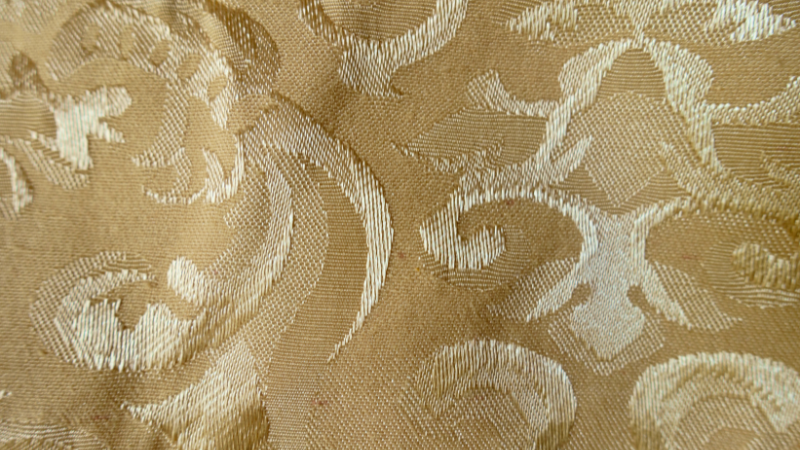
If you’ve noticed the lovely patterns on a gown, jacket or sofa, you may have seen jacquard fabric. In contrast to most fabrics, jacquard is special because its designs are part of the weaving process. The way these pieces are made gives them a balanced look, so every one feels elegant and strong.
Learning what jacquard fabric is and why it’s valued will make you understand why it’s great for both clothes and home decor. This guide explains the history, properties and applications of jacquard fabric, so you can decide what’s best for you.
What Is Jacquard Fabric?
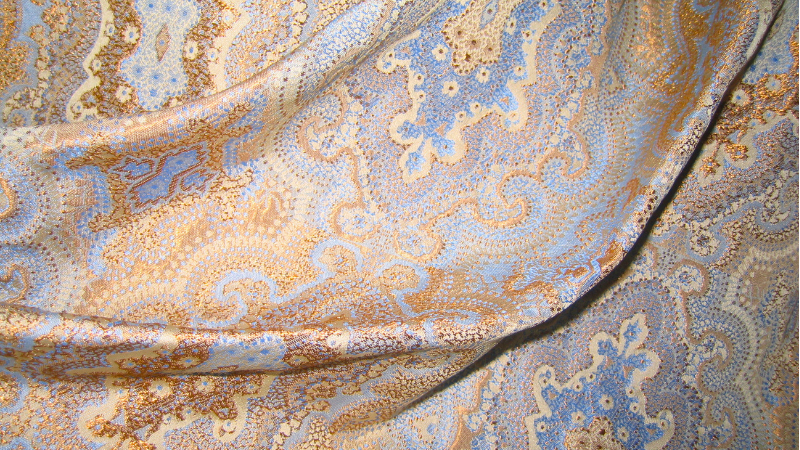
Textile weaving was greatly improved in the early 19th century by Joseph Marie Jacquard, who the fabric jacquard honors. Hand-stitching fine designs on fabric took a lot time and effort before his invention. Because of Jacquard’s invention which was inspired by Charles Babbage, the weaving of complicated designs became possible right in the fabric.
At first, draw boys used punched cards to create jacquard mechanism programs on early jacquard loom scarves with great precision. Now, computers play this part, enabling designs that are even better and frailer than medieval glass could achieve.
What makes jacquard fabric nice is that its patterns are actually woven into the fabric, giving it both interesting details and a texture to sense. For those seeking lasting elegance in their fashion or furnishing, jacquard’s special durability and touch appeal far more than ordinary printed or embroidered fabrics.
Key Features of Jacquard Fabric
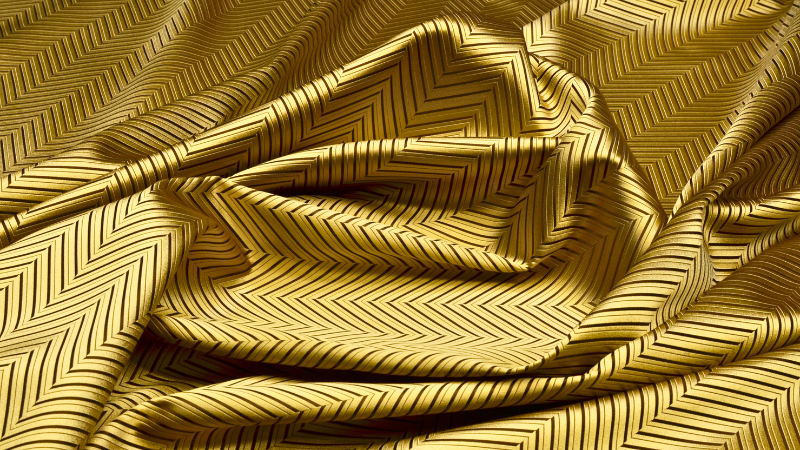
There are several special reasons why jacquard fabric is loved by both fashion and home buyers. Here are just a few:
Smooth and Layer-Rich on the Outside
Because of jacquard weaving, the fabric appears textured with various patterns standing out or sinking into the material. As soon as you touch this texture, you can tell it looks great and feels luxurious. The details woven into the fabric makes it more elegant than printed textiles can ever be.
Patterns that can be Worn in Many Ways
Many jacquard fabrics, for instance damask, are reversible, so the design is visible on both sides but usually the colors are different or one is a negative of the other. Because it’s reversible, the fabric can be used in places where both sides are seen, like drapes or upholstery cushions and this also helps it last longer.
Thicker and More Structured Maker
Because of their complicated weave, jacquard fabrics tend to be thicker and more orderly than plain-woven fabrics. Having extra weight in a fabric helps shape the garment, preventing wrinkles and is great for clothing and furniture that must stay attractive and neat. Since jacquard is durable, it can better handle the wear and tear you see from frequent wear.
Fun in Design with Durability
In spite of its detailed design and weight, jacquard fabric is pleasant to wear and feel smooth. Thanks to the weaving reeds, the product’s surface ends up very smooth and comfortable against our bodies. Thanks to its strong and soft nature, jacquard is found in high-end evening wear as well as in comfortable home textiles.
Common Uses of Jacquard Fabric
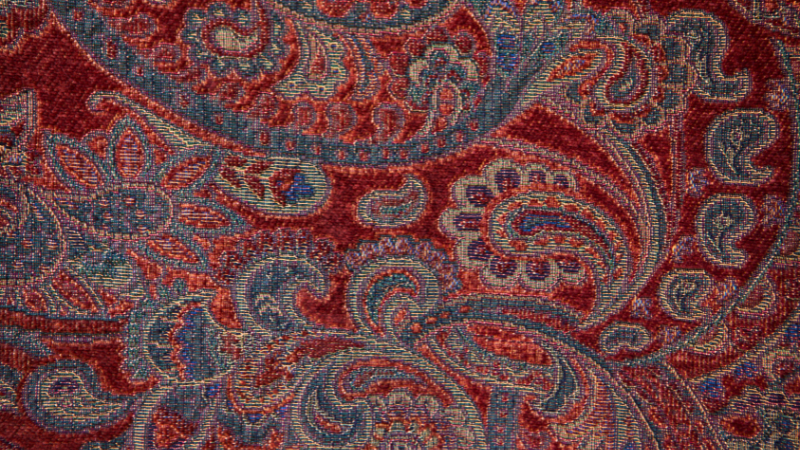
Due to being both beautiful and robust, jacquard fabric is used in many industries. These include:
- Fashion: For attire that needs both texture and a distinct look, designers often pick jacquard that includes formal dresses, tailored jackets, blazers and skirts. The fabric woven on a jacquard loom retains detail allowing it to be used in statement pieces that can’t be ignored.
- Home Décor: Many people prefer Jacquard for their sofa, armchair, cushion, curtain, table linen and bedding upholstery needs. Because they are built to last, the textile industry usually love them since they stay in great shape and make any area look elegant.
- Accessories: In addition to clothing and upholstery, jacquard is found in handbags, ties and scarves because these items need unique patterns and toughness.
Popular Types of Jacquard Fabric
Even though jacquard fabrics are all woven the same way, they have different textures, patterns and common uses. Let’s look at the jacquard process of some recognizable types:
Brocade
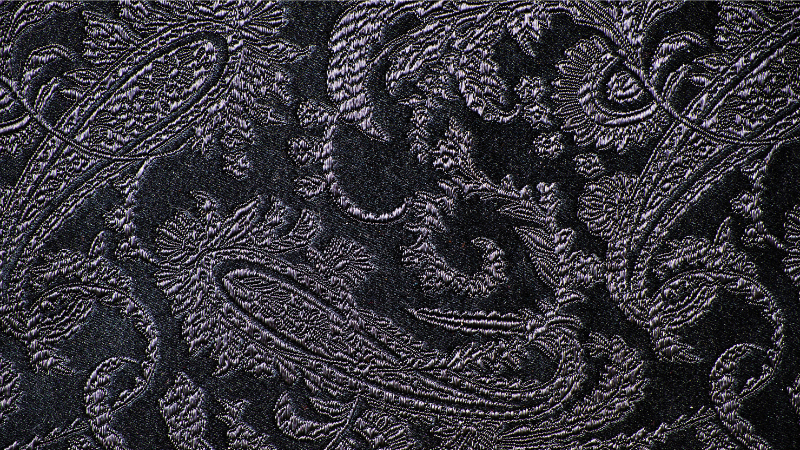
Among all jacquard fabrics, brocade is considered both elegant and very beautiful. It has a thick weave with plenty of texture that often includes gold, silver or copper threads to make patterns that really stand out.
The designs on brocade cover a wide range, from flowers and leaves right through to complex geometrical and heraldic shapes, which give brocade a royal and extravagant look. Earlier, brocade was worn only by royalty and the nobility on ceremonial robes, in church garments and on rich upholstery in castles and grand houses.
Thanks to its beauty and heft, brocade is a perfect choice for evening gowns, wedding dresses and sherwanis and kimonos. Its strong and stiff construction helps turn a simple outfit into something very elegant.
Designers use brocade to upholster striking armchairs and sofas because its strong texture and shimmer make them look special. Sometimes, it’s chosen for heavy, rich curtains and decorative pillows that make the room look nicer.
Damask
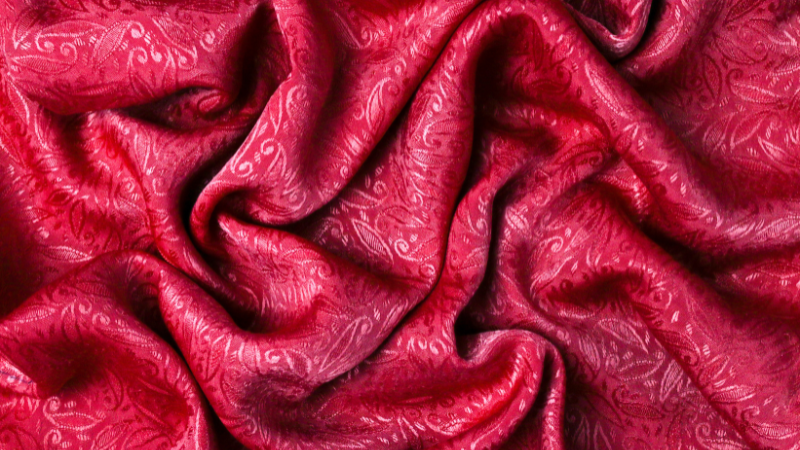
Damask is a traditional and useful jacquard fabric marked by its reversible pattern which appears the same on both sides, but with different colors or shades. That’s why damask is soft and graceful compared to brocade and other heavier jacquard head fabrics.
The intricate patterns in damask are most often flowers, plants or geometric, which causes the surface to attract light and dark in different places.
Because it has a fine feel and isn’t too heavy, damask is used both in clothing and in interior design. The pattern works well in dresses, skirts and jackets when you want a touch of luxury but don’t want the desired pattern to be too noticeable.
Because of their strong material and attractive appearance, damask is most often used for tablecloths and napkins in formal dining settings. It’s also used to upholster dining chairs and sofas, bringing a classic look without the solid feel of brocade.
Matelassé
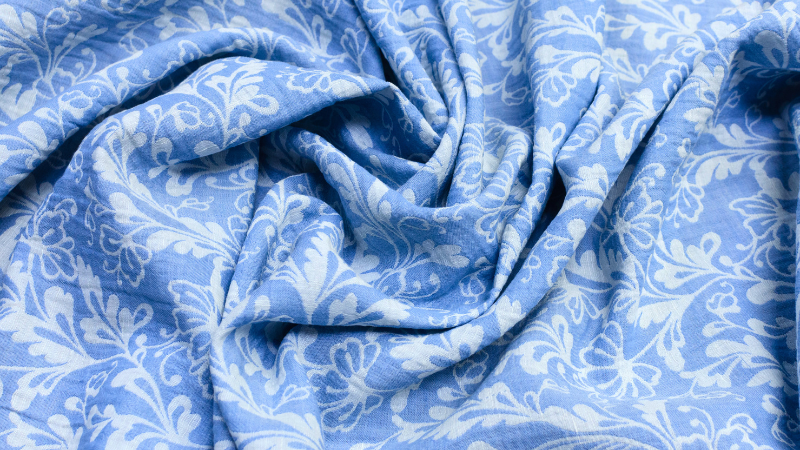
Matelassé is a jacquard fabric that looks padded or quilted, even though it doesn’t really have any stuffing inside. The result is possible thanks to the jacquard weave, which produces complex patterns that stick out and give the blanket a softer, 3D effect. The French word for quilted or cushioned, “matelassé,” is where this jacquard system gets its name from.
The fabric is thicker and heavier than many jacquard types, yet it adds softness and a little extra volume to any garment. You will often find matelassé in bedding, including coverlets, bedspreads and pillow shams, as it looks luxurious and doesn’t add too much weight.
Fashion designers choose this technique for structured garments such as jackets, skirts and dresses because it gives the outfit’s shape added texture and shape.
The tactile quality of matelassé helps home décor, showing up in decorative cushions and furnishings to make the design look better and feel more comfortable.
Pros and Cons of Jacquard Fabric
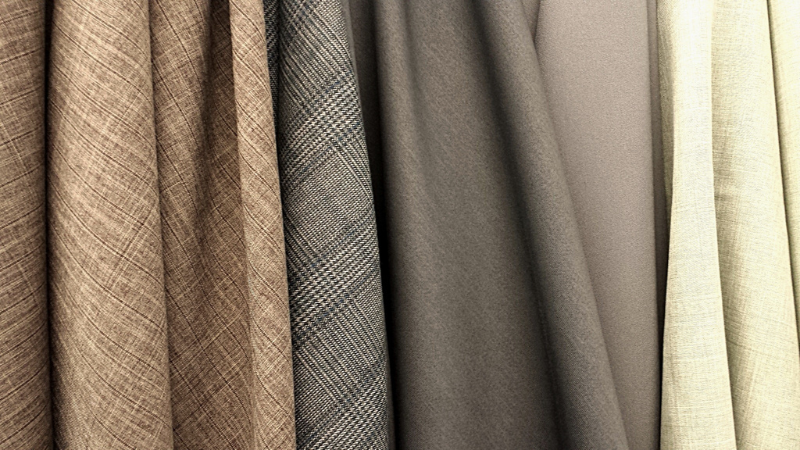
Jacquard cloth shares both strengths and weaknesses with other fabrics.
Pros
- Because of its jacquard weave, the material looks luxurious and textured.
- Because it resists wrinkles and lasts, it’s excellent for wearing and for decorating homes.
- A lot of jacquard fabrics can be flipped, which makes them more useful.
Cons
- Some jacquard fabric may lose comfort when it is made with heavier materials.
- Since the fabric is made in a complex way, it costs more and is tougher to alter or fix.
Jacquard vs Other Patterned Fabrics
It helps to compare jacquard fabric with other patterned textiles to appreciate its uniqueness:
Fabric Type | Pattern Creation | Texture | Weight | Common Uses |
Jacquard | Woven-in (via jacquard weave) | Textured, often reversible | Heavier | Fashion, upholstery, décor |
Printed Fabric | Printed on surface | Smooth | Light-Medium | Casual clothing, textiles |
Brocade | Woven with metallic threads | Heavy, raised patterns | Heavy | Formal wear, upholstery |
Damask | Reversible woven patterns | Smooth or slightly textured | Medium | Table linens, upholstery |
Why Jacquard Fabrics Need Particular Care
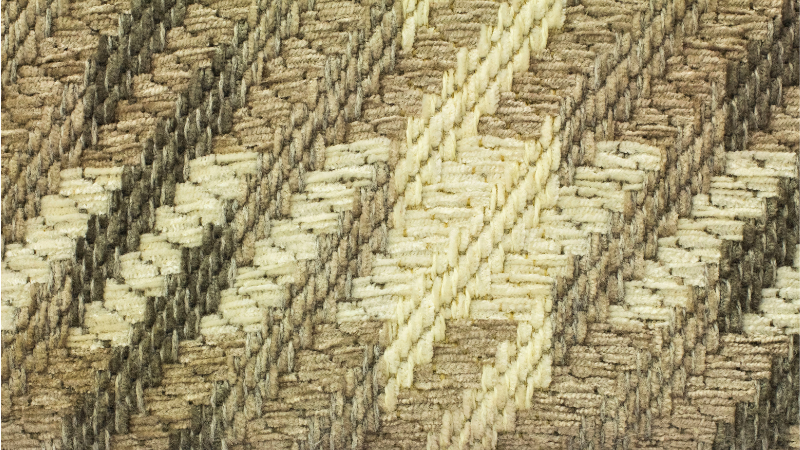
Taking care of your jacquard fabric will help it look beautiful, feel soft and last longer. Its detailed design and the fine nature of the fibers mean jacquard should be handled carefully. Let’s look at some specific ways to care for your jacquard cloth.
Washing
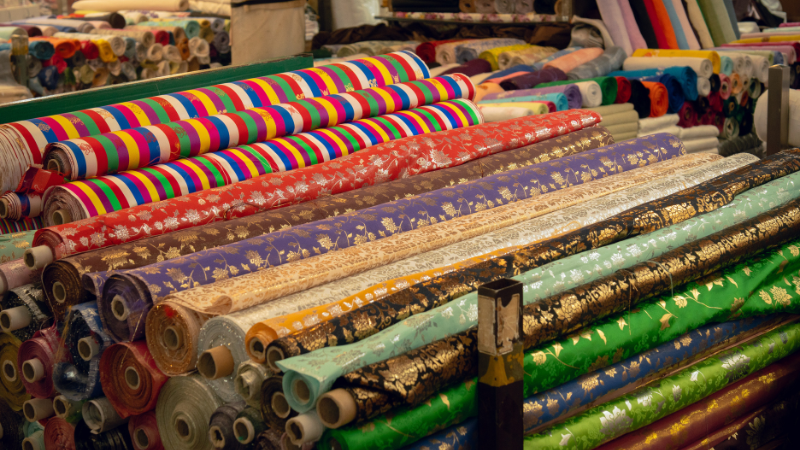
- Dry Cleaning: Most jacquard fabrics should be cleaned by professional dry cleaning for the best and safest results. Using this process maintains the texture of the fabric, stops it from shrinking and secures the delicate weave.
- Machine Washing: Linen and cotton jacquard fabrics, as well as polyester blends, can usually be washed in a jacquard machine. Before doing anything else, see the care label. Run your clothes on a gentle cycle with cold water, so the weave remains untouched and stays vivid. Put the fabric into a mesh bag so it is safer in the wash.
- Handwashing: You should wash delicate jacquard blends or older items with mild detergent in water that’s cold to the touch. Swish the fabric in the water, don’t twist it and make sure to rinse it several times.
Drying
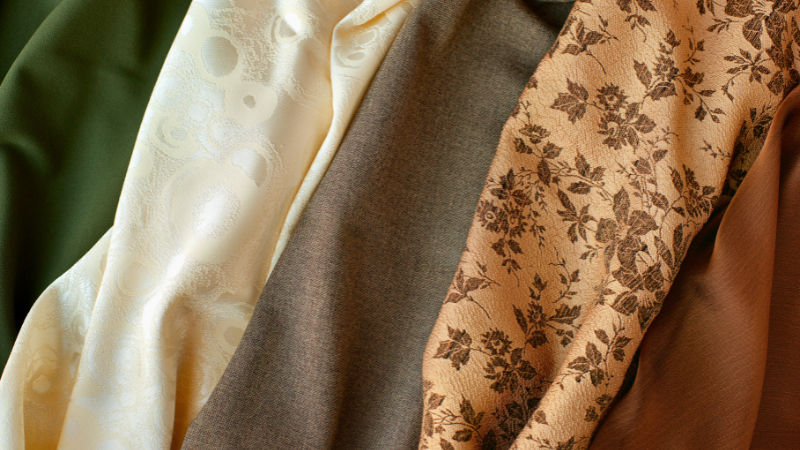
- Don’t squeeze or twist your jacquard cloth to remove water, since it can distort the material.
- Lay the fabric out on a clean towel, roll it gently to absorb moisture, reshape it and let it air dry somewhere where it won’t be exposed to sunlight.
- Don’t use a tumble dryer unless the label allows it, as the heat can cause problems and shrink your clothing.
Storage

- Don’t keep jacquard fabric in direct sunlight, since this can weaken the fibers and cause color to fade.
- When putting garments or upholstery fabric into storage, fold them very gently, so creases don’t become too deep. If you’re going to hang the shirt, use hangers with padding to prevent it from stretching.
- To stop moths and insects from getting to your natural fiber jacquard woven in silk or wool, add cedar blocks or place lavender sachets among your garments.
- Iron jacquard cloth on the reverse so you don’t crush the original design. Heat to the lowest temperature that is secure for the type of fiber you’re washing.
- Covering the jacquard weave with a clean, thin cotton pressing cloth between the iron and fabric will stop shiny spots and scorch marks.
- If you find wrinkles that won’t go away, bring a steamer close to the fabric, pointing it at the wrinkle and letting the steam relax them.
Final Thoughts: Why Jacquard Will Always Be a Luxury Fabric
Since jacquard fabric began with the jacquard weave, it has proved to be a symbol of high-quality work and ongoing luxury. If you are making beautiful clothes or home decor, jacquard cloth is known for giving both exceptional texture and strength.
Our specialty at Yanmao Textile Technology CO., LTD is supplying top-quality jacquard fabric designed just for you. Having worked with many leading international fast-fashion brands for years, we provide you with creative designs, high standards for quality and sustainable manufacture to ensure you are pleased.
We make sure to cooperate with clients to ensure your goods are delivered as planned and that our solutions match your requirements and budget. Looking for the hottest styles or personalized fabric? Yanmao Textile Technology is ready to help with premium jacquard and much more. You can depend on Yanmao to offer your products the best materials and reliable service.





